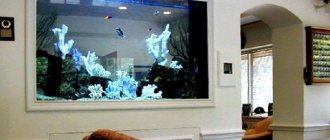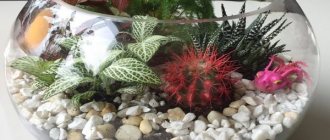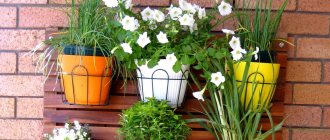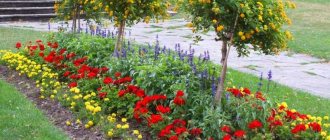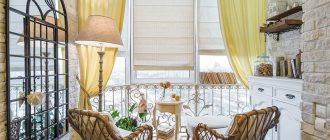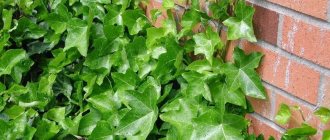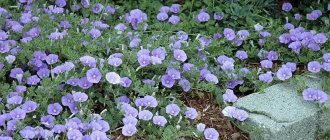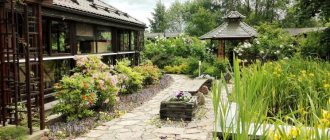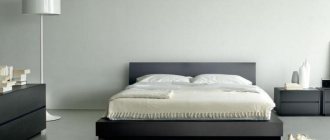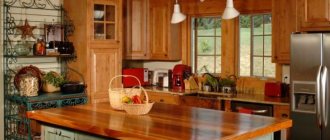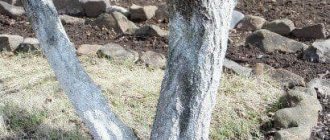Basic styles
Aquarium science distinguishes several types of aquarium design. But everyone is able to complement and improve aquadesign. Below are the main decorative styles for aquariums.
Dutch
This style first appeared in the middle of the last century and is still popular among aquascapers. The peculiarity of the Dutch style is the more, the better, or the complete filling of free space. This is especially true for the bottom part. Do not leave empty areas at the bottom. A large amount of vegetation of different levels is planted, the contrast of red and green colors is especially welcome. In the middle, attention is drawn to a snag or a structure made of large stones.
Pseudo-sea
Creating a pseudo-marine style does not require large investments. It requires standard soil and undemanding plants. The backlight is preferably blue. For additional resemblance to the sea, shells, artificial shells, and corals are used for the soil.
Natural
When using a natural style, it is important to create an interconnected and holistic composition of nature. There are several completed variations in the natural style:
- Rock garden. The main part of the decorations are stones. Sometimes stone figures have a hidden meaning.
- Iwagumi. Stones and Japanese dwarf trees are used, complemented by figures of houses, ships, and boats.
- Reboku. The focus is on driftwood and large stones.
- Wabi-kusa. A distinctive feature of this option is the presence of a moss hummock above the surface of the water. The plant that is used as tussock is called wabi-kusa, hence the name.
Collector's
The Dutch style is inaccessible to many, especially beginners. Therefore, a simplified Dutch collector style was created. The essence of this style is to plant small-leaved, fast-growing plants and wait until they grow and occupy the entire soil. For the collector style, you will need a volume of 100–200 liters. In a small space the effect will not be achieved.
Unforced Herbalist
In an unformed herbalist, plants play the main role and the focus is on them. Plants grow naturally in it, without human influence, and look natural.
Boosted Herbalist
In the forced herbalist, the emphasis is also on vegetation. The inhabitants are in second place. In such a herbalist, a certain level of gases and fertilizers is maintained to create lush vegetation.
Plot
This style consists of decorating a container in the theme of a certain plot. This could be the plot of a book, film, or story. The plot style is done through thematic figures, the creation of colors and shapes.
Vanguard
Avant-garde style is non-standard. Fits well into unusual and bright rooms. Most often artificial plants, unusual light, and brightly colored soil are used.
Biotope
The biotope style involves copying the structure of a natural body of water. This is the use of the same stones, the introduction of the same plants into the aquarium or local fish.
Types of aquariums
There are several types of corner tanks:
- L-shaped;
- triangular;
- panoramic.
It is worth considering each in more detail to know all the positive and negative aspects of each type:
- Corner aquariums in the shape of the letter L are suitable for rooms where it is necessary to preserve the existing space, while dividing it into zones. This solution will help to separate and advantageously decorate the rest area in the office. In this way, the apartment can be divided into living and dining areas. L-shaped tanks are an excellent solution for studio apartments.
- The triangle-shaped container is suitable for deep viewing. The disadvantage of the triangular type is the joint, which is not visible at first glance. This may lead to failure to detect the leak in time.
- A panoramic aquarium can take the form of the first two types. It differs from them in glass. They can be concave inward or curved outward. This applies to the front wall. This design solution allows you to consider the design of the container in volume.
The choice of tank shape depends on the design task and the availability of space. The container can be tall, but take up little space in width and length.
General instructions for setting up an aquarium
When decorating an aquarium with your own hands, there are certain fundamental principles. The main one is that when decorating an aquarium, underwater pets are moved to a separate tank. This will help avoid injury, damage and stress to the fish. It is better to move the water along with the fish so that their body does not experience additional stress due to a sudden change in water. After decorating, pour water into the aquarium.
The second rule is mandatory disinfection of all new items with which the aquarium will be decorated. Even items that cannot be replaced are processed after some time.
Buy a 200 liter aquarium
https://akva-service.com.ua/product/akvarium-dlya-rastenij-kardinal-as-led-100/
Well, we think the best option is the professional LED aquarium Kardinal Malavi from the Blue Barbus company. The downside is that it is only in Ukraine. Why did we choose this particular aquarium and why do we recommend it? Volume 238 liters with a length of 1 meter. It has more correct dimensions - 100*44*54 cm. Humanity has been attracted by the underwater world and its inhabitants for a long time. Fortunately, it is quite possible to keep some of their species at home. The only thing is that for this purpose we need a high-quality and reliable artificial reservoir. Our online store offers you to purchase an excellent specimen in the form of a Kardinal Malavi aquarium from the domestic Blue Barbus factory.
Decoration stages
Creating an aquarium design takes place in several stages and affects all areas.
Background
To decorate an aquarium, films or models made independently are used as a background. The right choice of background visually increases the space and creates the integrity of the underwater design.
Priming
For beginner aquarists, it is recommended to buy ready-made soil mixtures. When making soil yourself, it is difficult to take into account all the criteria, for example, particle size, color of the soil, what origin the soil is from. But when deciding to choose the soil yourself, take into account the type of fish and the general background of the aquarium.
Stones
Pet stores sell safe dummies of stones of different colors and shapes for decorating an aquarium with stones. But they still cannot compare with natural stones. But when choosing a natural stone, pay attention to its composition. It should not contain limestone. Quartz, granite, and basalt are well suited for creating an underwater rock garden.
Vegetation
Decorating aquariums with plants is an important part of aquascaping. They serve as shelter and food for fish, and also release oxygen. The vegetation chosen is completely safe for fish. You should avoid the appearance of algae on plants in the aquarium - this is harmful to the health of the fish.
Backlight
Aquarium lighting is a necessity for pets. But the lighting is easy to adjust to a specific interior design. Lighting equipment is available in different shapes, colors, and mountings.
Arrangement of the aquarium
Once you have chosen the form, you need to do the design. It consists of several stages.
Decor
Designing a corner tank is not a difficult task. Not only an experienced aquarist, but also a novice amateur can cope with this:
- You need to start with soil and substrate. Here the choice depends on the decor. If you plan to have live plants, you need to purchase a composition with the components necessary for the vegetation. For a container with artificial plants, you can choose decorative pebbles.
- After the soil has been laid, it is necessary to install decorative elements and plant plants. The design of a corner aquarium is selected depending on whether the fish need shelter and whether they can damage living plants.
- Install the necessary equipment. We design it taking into account the characteristics of living fish and other animals, as well as plants. The equipment is selected taking into account the need for additional oxygen or carbon dioxide supply.
Equipment
Additional equipment is an important stage in arranging a tank. It is necessary to maintain water parameters. With its help you can monitor the level of oxygen, temperature, acidity.
Required equipment for corner tank:
- Filter. It can be internal or external. It is worth considering that the first option takes up additional space in the container. The filter needs regular cleaning.
- A heater with a thermostat is necessary to maintain the water temperature required for the fish.
- Additional lighting. Fluorescent lamps are suitable for corner options. The power is selected depending on the species of fish and plants.
Some of them require long daylight hours. Others require a day/night cycle, so the system should be turned off periodically.
Important! It is better to choose the necessary equipment with a professional consultant. It will help you choose the right devices.
Fish
For corner tanks, it is better to select small fish that live in schools. These may be representatives of the characin family, for example, neons, minors. Carp, barbs, and cardinals are also suitable. The design of the fish with bright scales is emphasized. Under the influence of artificial lighting they will look even more advantageous. Small animals, huddling in flocks, create bright shimmering waters.
Filling procedure
When decorating, there are several stages that are mandatory for anyone who decides to engage in aquascaping.
- Choose a design style or develop your own design.
- Buy selected items from a pet store.
- Treat stones and wooden parts if you choose them outdoors.
- Process purchased items.
- Fill up the soil.
- Arrange the decorative pieces.
- Secure the equipment.
- Plant plants if necessary.
- Fill with water.
- Add underwater inhabitants.
If you use sea corals to design an aquarium, they are placed in the aquarium only after all inhabitants have settled.
How to properly place rocks in an aquarium
If you are installing large rocks or decorations made from them, place them at the bottom before filling in the soil. To avoid damaging the bottom, you can place large stones on plastic stands. Place large decorations either in the background or along the side walls. The exception is rock gardens, which have their own requirements for their placement.
To securely fix vertically placed stone slabs, use silicone rubber adhesive. And using sealant, you can create all sorts of unusual caves of bizarre shapes, various stepped compositions, etc. from stones.
Small stones can be laid already on the surface of the soil. But keep in mind that if you have fish that like to dig in the ground, they may be crushed by such a stone in the process. To eliminate the possibility of fish getting stuck between the stones and the walls of the aquarium, they must be placed either close to the walls or at a sufficient distance from them.
Aquascaping Ideas
- An aquarium with large objects and large inhabitants.
- Minimalistic style.
- Using corals.
- Use of fluorescent parts.
- Create an opening in the wall.
For 50 liters
A small 50 liter freshwater aquarium will be a good preparation before purchasing larger tanks. It is easy to maintain such a volume; it is easier to provide the necessary conditions and install aeration and filtration systems. Slow-growing plants take root well in such a space, but it is not recommended to plant fast-growing ones; they require frequent pruning of overgrown parts. Not all types of fish can live in a space of 50 liters, only small and medium-sized ones. For example, swordtails, guppies, zebrafish, molynesias. Larger species will not have enough space.
Per 100 liters
100 liters is the most comfortable displacement for creativity and quiet living of fish of different sizes. In a 100-liter home aquarium, it is possible to create a planted garden with many accents or create a minimalist pet habitat. Both small and fairly large fish get along. For example, goldfish, discus, gourami, angelfish.
For 200 liters
The 200-liter container looks good with a nautical design. It is possible to use large elements - large stone blocks, driftwood and long branches, plants with large leaves. But such a design is difficult to create with your own hands without special knowledge and equipment. Usually inhabited by large inhabitants of sea or ocean waters. For example, predatory fish will feel good.
Advantages and disadvantages
An aquarium with a corner solution has both advantages and disadvantages. The advantages of such tanks include:
- The ability to use the container in any living space. Manufacturers produce them in different configurations and designs, so they fit into any interior.
- Space saving. The tanks are located around the perimeter of the corner, so it does not require a separate place for installation. You can choose an option for both a large apartment and a compact room.
- The tank is installed on a cabinet, which can not only become an interesting design solution, but also additional storage space for attributes, additional decorative elements, and replaceable filters.
- The corner option is safe, especially for families with children. It cannot be turned over like a round container.
- Panoramic glass can only be installed on a corner tank. They increase viewing depth.
There are also some disadvantages:
- Some species of plants and fish require a lot of light, so there are problems where to place the container so that there is enough light for the vegetation and inhabitants of the aquarium.
- Corner tanks have a seam that is difficult to reach. Leaks may occur in these areas. To eliminate them, it is necessary to periodically inspect all joints.
- The need to install additional lighting and heating systems. This is especially true for containers with heat-loving plants and fish.
When choosing a container, you should consider both the advantages and disadvantages.
Photo
Minuses
In addition to false ones, there are several true facts that do not speak in favor of artificial plants:
- No photosynthesis. Aquariums with non-living plants need more powerful aeration, since artificial plants cannot produce oxygen and do not remove carbon dioxide from the water.
- Stagnant zones.
Some types of natural plants with a developed root system are able to aerate the soil, which reduces the risk of the formation of stagnant zones. Alas, plastic algae cannot do this.
These two problems can be called basic, however, they can contradict themselves. After all, plants produce oxygen only during the daytime, but at night they willingly take it back, and sometimes the total amount of absorbed gas significantly exceeds the volume of production. The second point can be answered by the fact that not all natural plants are capable of this, so it is worth contrasting this fact in disputes about what kind of algae is needed only in some cases.
